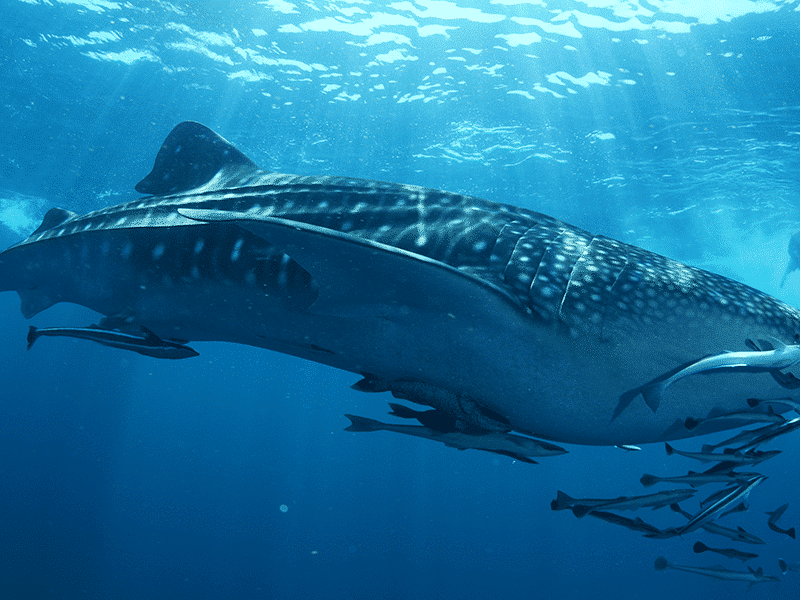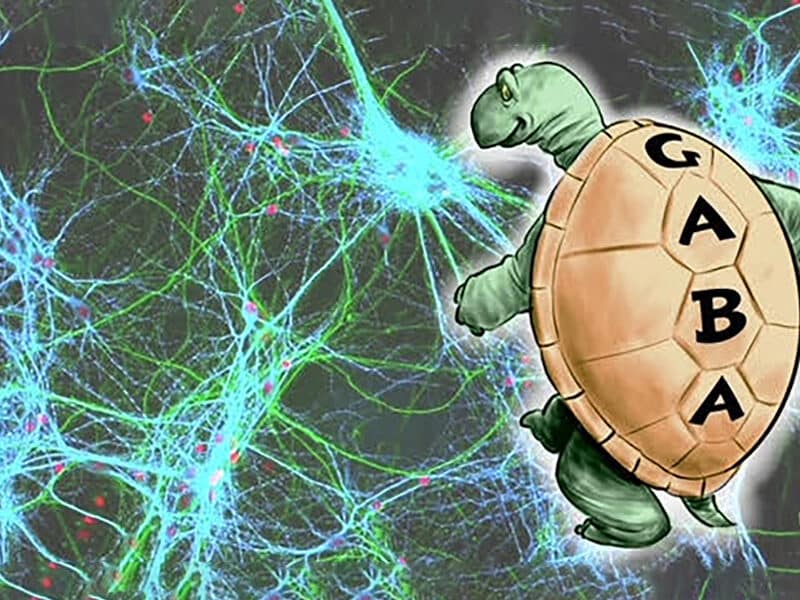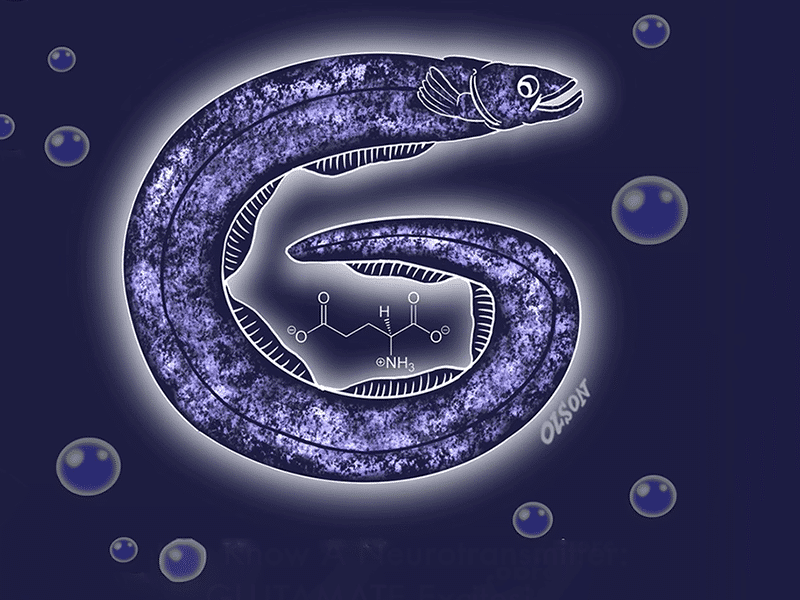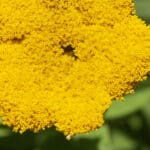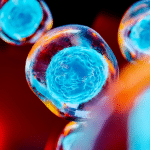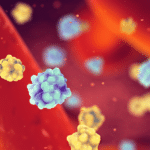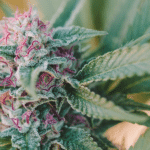“In skating over thin ice, our safety is in our speed.” – Ralph Waldo Emerson
It’s sad – intellectually dishonest even. For some reason, dopamine always gets put in the neurotransmitter box labeled ‘addictions and stimulants’. But this little amine is so much more.
When a kitten is born, she comes with an inborn tendency to lick herself for cleaning. But she doesn’t do a very good job at it, just nuzzling her paws with her tongue a bit. The instinct is there, but she needs encouragement from her environment. If separated from her mother, this kitten will never learn to clean herself properly – just a haphazard licking that will leave her forever mangy and bedraggled. But if mama cat encourages her and demonstrates the proper licking techniques for good hygiene, it’s the dopamine that enables the learning of that lesson.
Dopamine is the mother of learning – and the thrill of learning. Found in creatures as ancient as jellyfish, hydra, and corals, dopamine likely dates back 500 million years to the emergence of the first nervous systems. In every animal studied thus far, dopamine propels motor behaviors and rewards learning. Do you want to train a roundworm to navigate a maze? Give it a shot of dopamine as a prize.
Vital to our motivation and our motor control, dopamine also helps with our executive function and enables our lactation and our sexual gratification. When our dopamine machinery goes awry, it leads to some terrible maladies, most notably Parkinson’s disease.
Dopamine is like the shark of our brains, much maligned as a cold predator of destruction, but in reality, it’s a key regulator of our neural ocean.
Dopamine in the Brain
Given the many known neural functions of dopamine, it’s noteworthy that dopamine accomplishes so much from such a small base of command. Out of the 80+ billion neurons in the human brain, only around 400,000 of them are dopaminergic (dopamine producing). These exist predominantly in a spread across 11 cellular clusters running from the midbrain to the forebrain. But from these clusters, the axons of dopamine neurons project all over the brain to produce their wide-ranging effects.
The brain’s most important source of dopamine remains the basal ganglia, a center of motor systems as well as action selection (deciding among several possible behaviors to execute). Located in the midbrain, the basal ganglia can be divided into several areas and each area controls various types of behavior. Some reach out to the highest areas of brain like the prefrontal cortex to help with the selection of our actions and some areas act via the specific muscles we use to carry those actions out. Essentially, it’s a system of decision-making and the carrying out of actions.
Dopamine sets the threshold for the amount of signaling necessary to trigger a behavior. Thus, high levels of dopamine may lead to impulsive actions as well as to increased motor activity. Conversely, when dopamine levels are low, you experience slowed reactions and sluggishness. In Parkinson’s disease, characterized by low levels of dopamine, the body resists following the brain’s commands and patients experience difficulty in initiating movement.
Once you start treating Parkinson’s with dopamine-raising drugs, it allows people to move their bodies more easily, but it can also cause them to act erratically, energetically, and to manifest new addictions. The complexity of dopamine’s effects and the pathways it uses makes tinkering with it fraught with side effects.
Dopamine Pathways
Four major dopamine pathways exist in the human brain:
Mesolimbic pathway – The Reward Pathway!
- Involves liking something, wanting something (“incentive salience”), learning to avoid things you don’t like (“aversion-related cognition”), positive reinforcement and the cognitive rewards of a job well done (“reward-related cognition”).
- A positive and negative feedback loop that’s often dysfunctional in ADHD, addiction, and schizophrenia.
- If you’re a lab animal with a lesion in this part of your brain, you will spend less time pressing that little lever for nicotine or searching for food.
Mesocortical pathway – Executive Functions
- Runs from your brain’s VTA (ventral tegmental area – a dopaminergic hotspot) up to the prefrontal cortex (highest area of your brain).
- Involved in cognitive control, motivation, and emotional responses.
- Often dysfunctional in ADHD, addiction, and schizophrenia (especially the negative symptoms of schizophrenia such as word loss, reduced emotional displays, and the ability to initiate or continue self-directed activities).
Nigrostriatal pathway – Production of Movement
- Orchestrated by the basal ganglia, it regulates the control of voluntary movement.
- Influences reward, cognition, and addictive behavior.
- Degeneration in this area of the brain is one of the main features of Parkinson’s disease. While a deficit of dopaminergic neurons in this area is linked to Parkinson’s, it’s theorized that Tourette’s syndrome is caused by too much excitation via the same pathway.
Tuberoinfundibular pathway – Hormone Secretion
- Especially prolactin from the pituitary gland.
And that’s just the brain (plus we skipped two of the minor pathways). Dopamine circulates constantly in our bloodstream. In organs all over the body, it acts as a local messenger: in the blood vessels (dopamine opens ‘em up), kidneys (makes you urinate more), the pancreas (drops your insulin production), the GI tract (slows your gastrointestinal motility), and immune cells (reduces their activity).
Dopamine also functions as a chemical messenger in many plants with bananas containing the highest amounts. But eating a banana or another dopamine-rich food source doesn’t cause more dopamine to act on the brain because dopamine doesn’t cross the blood-brain barrier. Separate pools of dopamine exist on both sides of the blood-brain barrier and the majority of our body’s dopamine supply comes from the guts.
Dopamine Receptors
Three more things to know about dopamine:
First, dopamine causes two types of neuronal firing. There’s the steady frequency of tonic phase vs the burst-like firing pattern of phasic phase, usually directed towards some sort of goal.
Second, there are five known dopamine (D) receptors, which fall into two categories: the “D1-like receptors” (D1 & D5) cause excitation, while the “D2-like receptors” (D2, D3, D4) cause inhibition. Quite a toolbox.
Lastly, and finally getting to our beloved cannabinoids, dopamine receptors team up with CB1 cannabinoid receptors to form something called heteromer complexes. That’s when two different receptors on the cell’s membrane link up to make a joined complex that functions differently from each of them acting alone.
By itself, a D2 receptor inhibits the release of more dopamine. But if that D2 receptor joins to a CB1 receptor, then the activation of that complex acts much more potently to lower the release of dopamine. How this might play into the usefulness of cannabinoids to treat addictions is easy to imagine. And in a mouse model of schizophrenia, treatment with cannabinoids and antipsychotics alter the heteromer complexes of CB1 and D2 receptors.
The endocannabinoid system (ECS) modulates dopamine receptor signaling – but with a complex system comes complex controls.
Dopamine & the ECS
A quick refresher on the endocannabinoid system. You possess two endocannabinoid receptors. CB1 is the most common receptor of its type in the human brain and is found across all of your highest functioning areas (but none of your basic functions like breathing, which is why you can’t fatally overdose on cannabis). The CB2 receptor is present in every organ and is intimately tied to your immune system. It also exists in the brain, but usually at low levels until there’s some sort of problem. Then its numbers swell to help facilitate neuroprotection and healing.
The two most well-known endocannabinoids that bind to these receptors are anandamide (the bliss neurotransmitter) and 2-AG. Plus, we have enzymes (FAAH and MAGL) that regulate the levels of these endocannabinoids, as well as transport molecules to help move them around the cell.
Unlike most other neurotransmitters, endocannabinoids are lipids – fats. This means that even small shifts in their levels can be detected by a cell and used as a delicate control mechanism. The ECS is best described as your system’s system of homeostasis and of balance. It regulates the ebb and flow of other neurotransmitters, including dopamine. The cannabinoids and dopamine converge on some key areas including sex, motivation, and addiction.
Sex
If you give anandamide or 2-AG to a rat, they copulate more. After a rat is sexually satiated, they have an inhibition against more sex that lasts up to a day. The injection of anandamide into the relevant brain area (the VTA) lowers their sexual inhibition via the D2-like receptors. The injection of 2-AG in the same area accomplishes the same task but it operates via the D1-like receptors. So, one endocannabinoid activates the inhibitor and the other inhibits the activator to enable the same goal: more sexual motivation.
Of course, as often happens with the ECS, a gender difference exists as well. According to a 2020 review by researchers at the Saint Louis University School of Medicine, the activation of the CB1 receptor can impair erections in males, whereas cannabis tends to increase sexual desire and function in females. For THC to increase sexual behavior in female rats, they need to possess both progesterone and dopamine receptors.
Motivation
According to Maslow, you need to eat, you need social connection, you need self-respect. When you complete a task like eating food or helping a friend, you get a reward of dopamine, a little neurochemical treat to encourage you to keep coming back.
The endocannabinoid system modulates dopamine-driven positive reinforcement. Block the CB1 receptor and dopamine levels drop along with the reward-seeking behavior. For the opposite of rewards – negative stimuli – motivational learning is just as necessary. In mice getting jolted by electrical foot shocks in certain areas of their cage, the mesolimbic reward pathway gives a shot of dopamine to teach them the avoidance of triggering that shock. They learn the fear memory.
Activating the CB1 receptor helped mice forget their fear memory and more quickly return to baseline, a hint of why so many people with PTSD turn to cannabis. Anandamide causes this same forgetting via the amygdala – the brain’s fear center – and 2-AG does so via the release of more dopamine in the mesolimbic reward pathway. One of the overarching purposes of the endocannabinoid system is forgetting. This means that while you might not remember all the details of the movie you watched stoned, you will also more readily forget, or stop reacting to, your trauma.
However, it’s rarely simple when using a polyphonic plant like cannabis. In one clinical study, if the participants have the choice to do a harder task for more reward, giving them THC beforehand makes them less likely to choose the harder task. However, add CBD as well and it eliminates this “transient amotivational effect” of THC. You see the same thing in mice: increasing their levels of endocannabinoids facilitates their goal-seeking behavior. Life lesson: Take CBD to offset those slight negatives of your THC-rich cannabis.
Addiction
Addiction can be seen as a hijacking of the motivational system. But the line can be thin between behaviors to protect yourself and those that go too far and actively harm your life. As the harm reductionist Lisa Raville says, smoking meth so you can stay awake all night because laying down means freezing to death is a wise adaptive behavior. But being unable to stop your use and then not sleeping for a few days harms your health. In either case, these patterns arise out of goal-directed behavior pathways.
The stimulant class of drugs makes you think of dopamine. Cocaine blocks the reuptake and destruction of dopamine, leading to higher levels in the synaptic cleft between neurons where the brain’s signaling occurs; amphetamine redirects transport of dopamine to the synaptic cleft; and other notorious drugs (including opioids, nicotine, and booze) also increase the firing and bursting rates of the dopamine neurons.
And perhaps most importantly, our behavioral addictions act via dopamine as well. Shopping, sex, overeating, social media, and gambling – each instance triggers that little hit of dopamine. And while cannabis may be only mildly physically addicting, like any behavior, it can be seriously mentally addicting. But isn’t that action of raising the pipe to your lips after a long day of work and kid-wrangling so soothing? Where do we draw the line between harm and health?
The effects of endocannabinoids and plant cannabinoids on addiction are complex. In rats addicted to cocaine, the CB1 receptor mediates the impulsivity and altered dopamine activities. If you block the CB1 receptor, you block those changes. The increased motivation triggered by cocaine won’t occur without CB1 receptors and the 2-AG endocannabinoid.
In a rat model of stimulant addiction, CBD lowered the likelihood of relapse, lowered anxiety levels, and improved the levels of endocannabinoid and dopamine machinery in the brain. When taking methamphetamine, CBD blocked the release of dopamine and diminished the reward effects.
During withdrawal from most addictive substances, the levels of dopamine release tend to be lower. The ability of endocannabinoids like 2-AG to boost those levels might be part of the reason that cannabinoids help with drug withdrawal. For opioids specifically, the close relationship between our endorphin system and endocannabinoid system allows for cannabinoids like CBD to attenuate the symptoms of withdrawal by raising the levels of anandamide.
Other Systems & Diseases
Let’s take a closer look at how cannabinoids act via dopamine pathways in the brain and throughout the body.
In the eyes:
- In the retinas of goldfish, the CB1 receptor and a dopamine receptor work together to modulate the day/night difference in rod-cone coupling.
- The ability of cannabis to slow dopamine transmission in the brain can be studied by changes in the retina’s responses.
In the guts:
- In rats, the ECS and the dopamine system are linked to changes associated with obesity.
- In rats, treatment with a synthetic cannabinoid yields insights into how the endocannabinoid system interacts with dopamine, GABA, and ghrelin (an important hormone related to food intake).
In the brain:
- 2-AG helps to regulate brain plasticity via the dopamine pathway.
- Activation of the CB2 receptor upregulates the expression of one of the dopamine receptors.
- In neuron tissue, CBD protects the dopaminergic cells against stress via the heme oxygenase system (the enzyme that catalyzes the degradation of heme in your blood).
- In dopamine neurons, CBD protects against cadmium poisoning.
- In dopamine neurons, the ECS protects them during ischemia (loss of blood flow).
- In mice, the CB1 receptor is necessary for the development of important dopamine neurons in the brain.
In neurodegenerative disorders:
- In a mouse model of tauopathy (brain disorders with deposits of tau proteins and neurofibrillary tangles such as Alzheimer’s disease), phytocannabinoids improve dopamine transmission as well as the pathology of tau and amyloid plaques.
- In a mouse model of Huntington’s disease, inhibiting endocannabinoid degradation helps to fix dopamine problems and motivational issues.
- In a mouse model of Parkinson’s disease, CBD improved cognitive dysfunction and increased locomotion, decreased neuroinflammation, and protected the dopamine-producing neurons.
- In a rat model of Parkinson’s disease, activating the serotonin receptor 5HT1A (as CBD does) reduces dopamine D1 dyskinesia.
- In a mouse model of Parkinson’s, not having enough DAGL (the enzyme that creates the endocannabinoid 2-AG) caused impaired locomotor skill learning and worse disease progression, suggesting increased 2-AG as a treatment.
- In a rat model of Parkinson’s disease, a combination of a CB1 blocker along with the standard treatment of L-DOPA helped to protect dopamine neurons as well as alleviating motor symptoms.
- In a mouse model of Parkinson’s disease, targeting the NAAA enzyme (which breaks down PEA, an endocannabinoid-like neurotransmitter) protects against dopamine neuron loss and parkinsonian symptoms.
- In neurons, the loss of dopamine harms the ability of the CB1 receptors to operate (perhaps explaining some of the symptoms of Parkinson’s disease).
- In aged mice, pretreatment with PEA protected the brain from Parkinson’s-like damage via several mechanisms, as well as providing protection from a Parkinson’s-like insult.
- In rats, a cannabinoid agonist helps with dyskinesia via changes in dopamine and glutamate.
In mental health:
- Endocannabinoids may help with depression via the regulation of dopamine.
- In PTSD, dopamine interacts strongly with the endocannabinoid system.
- In rats who experienced a trauma, an infusion of CBD interrupted their fear consolidation of the memory even if given 5 hours afterwards.
In schizophrenia and psychosis:
- CBD is suggested to be protective against THC-induced dysphoria and psychosis and its effects on the mesolimbic reward pathway suggest CBD as a treatment for schizophrenia.
- The ability of high levels of CBD to bind to the D2 receptor may account for its clinical antipsychotic effect.
- In mice with a tendency towards schizophrenia, early treatment with CBD altered the transcription of a dopamine gene, suggesting CBD as a potential treatment.
With all of the above, the therapeutic potential of using cannabinoids to modulate your dopamine system is significant. It remains for clinical research to sort out how best to harness this potential in humans given what should be obvious: dopamine is so much more than just a molecule of addiction and speed.
See other articles in the Get to Know a Neurotransmitter series.
Lex Pelger writes articles about psychoactives and the endocannabinoid system. He publishes a weekly cannabinoid science newsletter Cannabinoids & the People and conducts 1-on-1 education sessions on using CBD, PEA, THC & CBDA for serious health conditions. © Copyright, Project CBD. May not be reprinted without permission.
Recommended Readings
PEA: Anti-Inflammatory Superstar
From the “Get to Know a Neurotransmitter” series: PEA, the endogenous CBD.
Taking It Slow With GABA
From the “Get to Know a Neurotransmitter” series: GABA calms.
Glutamate, A Love Story
From the “Get to Know a Neurotransmitter” series: Glutamate excites!


